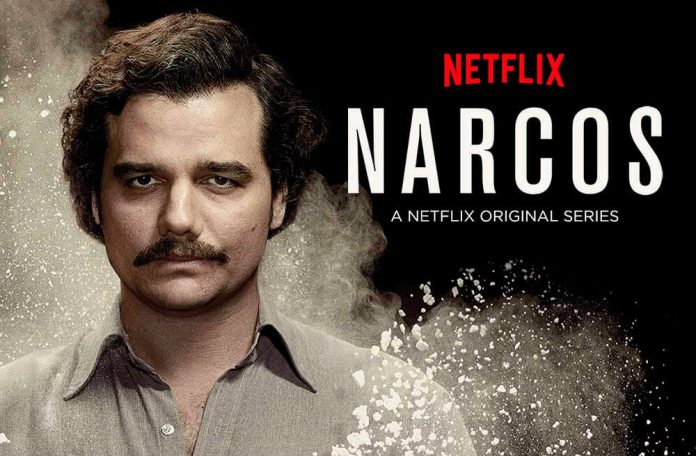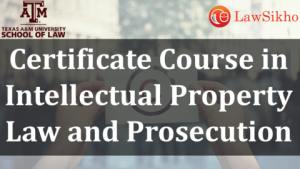This article is written by Pratik Pravin Patil pursuing Certificate Course in Intellectual Property Law and Prosecution from LawSikho.com.
Table of Contents
Introductions
Facts: Roberto De Jesus Escobar Gaviria, Pablo Escobar’s 71-year-old surviving brother decided to sue Netflix over the show ‘Narcos’ created and produced by Netflix. Gaviria also threatened to “close their little show” if Netflix did not pay his company, Escobar Inc., a $1 billion settlement for intellectual property violations. The company Escobar Inc. owned by Roberto filed several use-based applications for the mark Narcos and Cartel Wars with the United States Patent and Trademark Office covering a range of goods and services in 2016. The lawyers for Narcos Productions LLC the company which was behind the popular video game and the series which streamed on Netflix responded to these allegations through their law firm Sheppard, Mullin, Richter & Hampton LLP. The law firm wrote a letter to the company Escobar Inc. to abandon its use-based trademark application for the wide range of goods and services right from sunglasses to downloadable ringtones. The law firm further in its letter pointed out the fact that while Escobar Inc claimed that the word ‘Narcos’ was used by them in connection with operating a website and game services were provided online since January 31, 1986, even though the internet was not built for widespread consumer use or could host game services at that time. The claims were obviously fraudulent and the attorneys for Netflix and Narcos productions demanded a bar to registration of these trademarks and also statutory damages, actual damages, and profits arising out of the unauthorised use of the trademarks.
The aftermath of this whole story ended with an abandonment application filed by Escobar Inc.
Issue: The main issues surrounding this whole story
-
Whether registration should be granted to unregistered trademarks on the claim of use
Consider every well-known company’s logo, such as Apple, Starbucks, or McDonald’s. These are all registered trademarks, which means that their corporate owners have filed a trademark application with a government entity. However, to qualify as a trademark, a mark does not always need to be registered. A trademark that has not been licenced with the United States Patent and Trademark Office is known as an unregistered trademark (or at any of the state trademark offices). Owners of unregistered trademarks, on the other hand, have legal protection in the regions where they work. Since they are covered by state-based unfair competition laws, these are often referred to as “common law” trademarks. In certain cases, an unregistered mark may prevent a subsequent federal consumer in the same geographic region from using it. A larger company coming into an area, on the other hand, might not be able to prevent a smaller competitor (whose use preceded the big company) from using a similar name. (As a result, Norman McDonald was able to keep his name on his hamburger stand in Philpot, Kentucky, even though his copycat arches had to be removed.)
-
Unregistered trademarks: Rights in the USA
Unregistered mark laws are based on a common-law English business principle: if anyone receives consumers (known as “market goodwill”), it is unethical for someone else to falsely pass off similar goods or services. Not only would such behaviour be detrimental to the first company, but it would also cause customers to be confused about the origin of the products. Though US laws still provide some degree of protection to the unregistered trademarks sometimes there can be businesses taking unfair advantage of these provisions. The protection in case of an unregistered trademark often becomes limited, as an unregistered trademark can stop one similar trademark from operating in its region but it cannot do so in multiple jurisdictions.
-
Should the USPTO and also other trademark offices around the world devise a system for detecting spurious trademark applications
The problem with these spurious and fake claims like the one made by Pablo Escobar’s brother is that these often act as a tool for the dilution of the original trademark. In this case, though this was a mere case of extortion or some sort of publicity that Escobar Inc gained through this whole saga. Hollywood productions and other OTT platforms often try to resolve such disputes by paying off such infringement claims, but this precedent can be dangerous when situations such as these arise where the platforms now have to spend a considerable amount of time and money to fight off these dubious legislations.
The USPTO in 2019 was plagued with the issue of fake trademark specimens being submitted with trademark applications particularly by the Chinese applicants. Trademark registration in the United States is dependent on usage. Before a mark may be federally licenced, an applicant must show that it is currently being used in commerce. The applicant’s mark must be shown to be used on or in conjunction with the applicant’s products or services in the proof. The evidence provided by the applicant is referred to as a specimen. Images of the actual products on which the label is shown, a sign affixed to the goods, or a page promoting the applicant’s services may all be used as specimens. Notably, digitally produced, edited, or mock-up specimens are not accepted by the USPTO. Since 2012 the US has raised this issue where trademark subsidies are provided by the Chinese companies for every trademark filed. This was supposed to create problems in the US trademark registration process. Thus the USPTO launched a pilot program in 2018 to report fake specimens. Though this program was designed to report fake specimens to the USPTO it was not effective and the USPTO has been silent on the effectiveness of the program.
-
How to file a trademark abandonment application in USPTO and does it exist in India
The concept of abandonment of trademark by application is not mentioned under the Indian Trademark laws but the Title 37 Code on Federal Regulations mentions the process by which an application for abandonment of trademark can be filed. The two sections below mention the process of abandonment of trademark application:
-
37 C.F.R. § 2.68: Express abandonment (withdrawal) of application
(a) Written document required: An applicant may expressly abandon an application by filing a written request for abandonment or withdrawal of the application, signed by the applicant, someone with legal authority to bind the applicant (e.g., a corporate officer or general partner of a partnership), or a practitioner qualified to practice under Section 11.14 of this chapter, in accordance with the requirements of § 2.193(e)(2). A request for abandonment or withdrawal may not subsequently be withdrawn.
(b) Rights in the mark not affected: Except as provided in § 2.135, the fact that an application has been expressly abandoned shall not affect any rights that the applicant may have in the mark in the abandoned application in any proceeding in the Office.
-
37 C.F.R. § 2.135: Abandonment of application or mark
After the commencement of an opposition, concurrent use, or interference proceeding, if the applicant files a written abandonment of the application or the mark without the written consent of every adverse party to the proceeding, judgment shall be entered against the applicant. The written consent of an adverse party may be signed by the adverse party or by the adverse party’s attorney or other authorized representative.
Conclusion
There is often no way to stop these dubious legislations but a system using AI can identify the patterns in such claims and reject them so that the examiners will not have to admit these claims. There will be multiple issues and challenges regarding existing laws and regulations of the USPTO but if enough research is done in this area the trademark application system can be improved.
Students of Lawsikho courses regularly produce writing assignments and work on practical exercises as a part of their coursework and develop themselves in real-life practical skills.
LawSikho has created a telegram group for exchanging legal knowledge, referrals, and various opportunities. You can click on this link and join:
 Serato DJ Crack 2025Serato DJ PRO Crack
Serato DJ Crack 2025Serato DJ PRO Crack











 Allow notifications
Allow notifications



